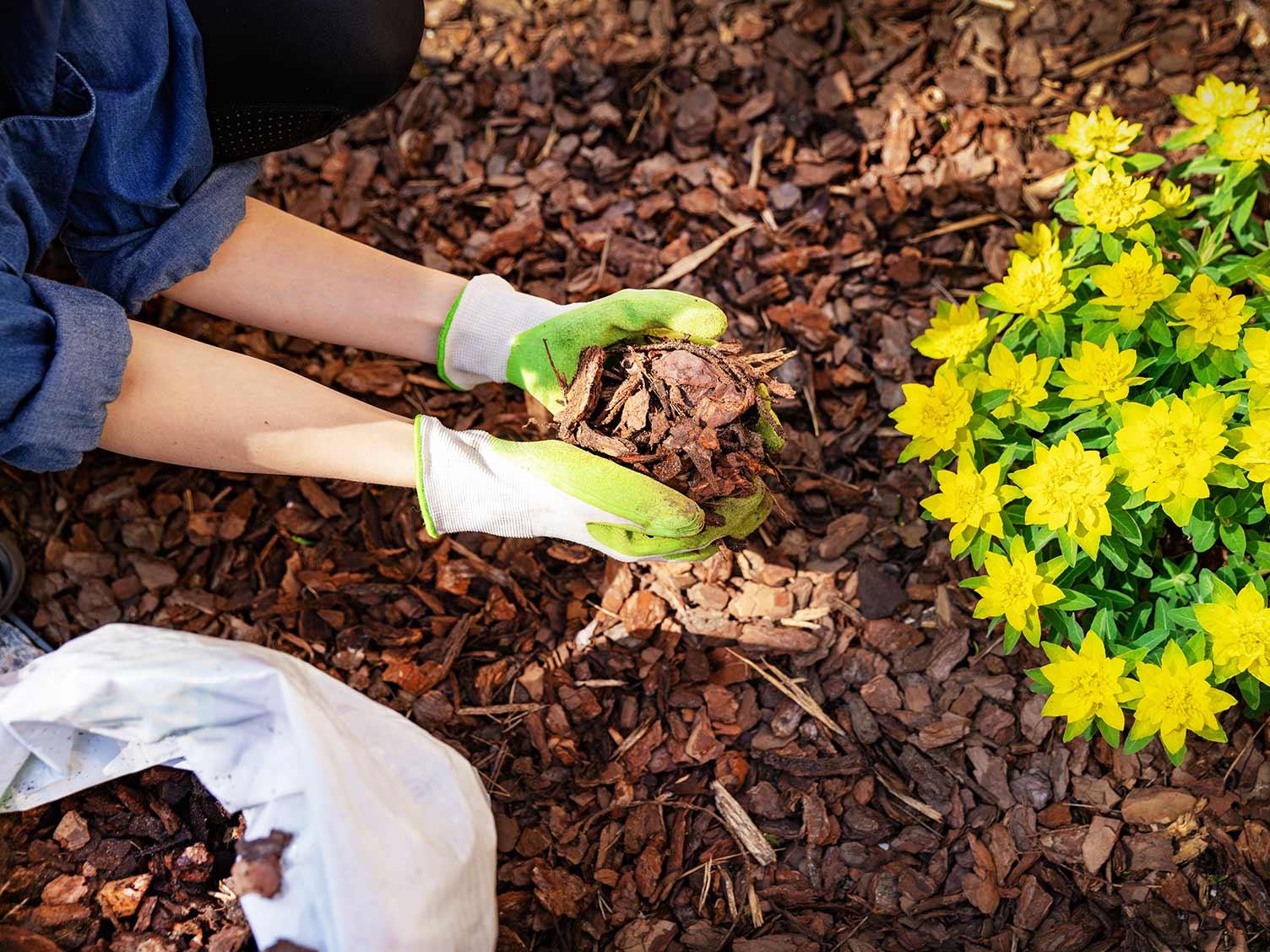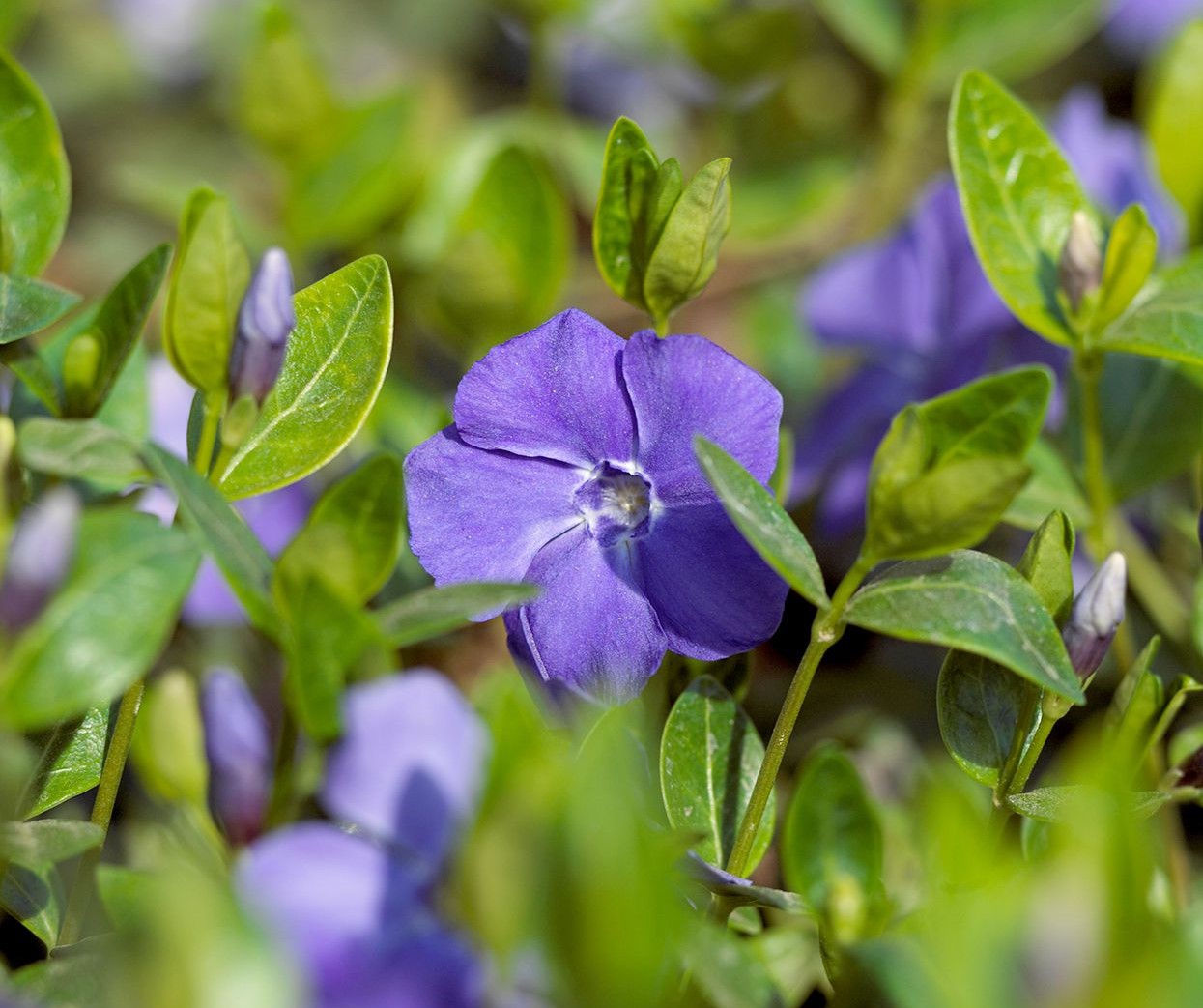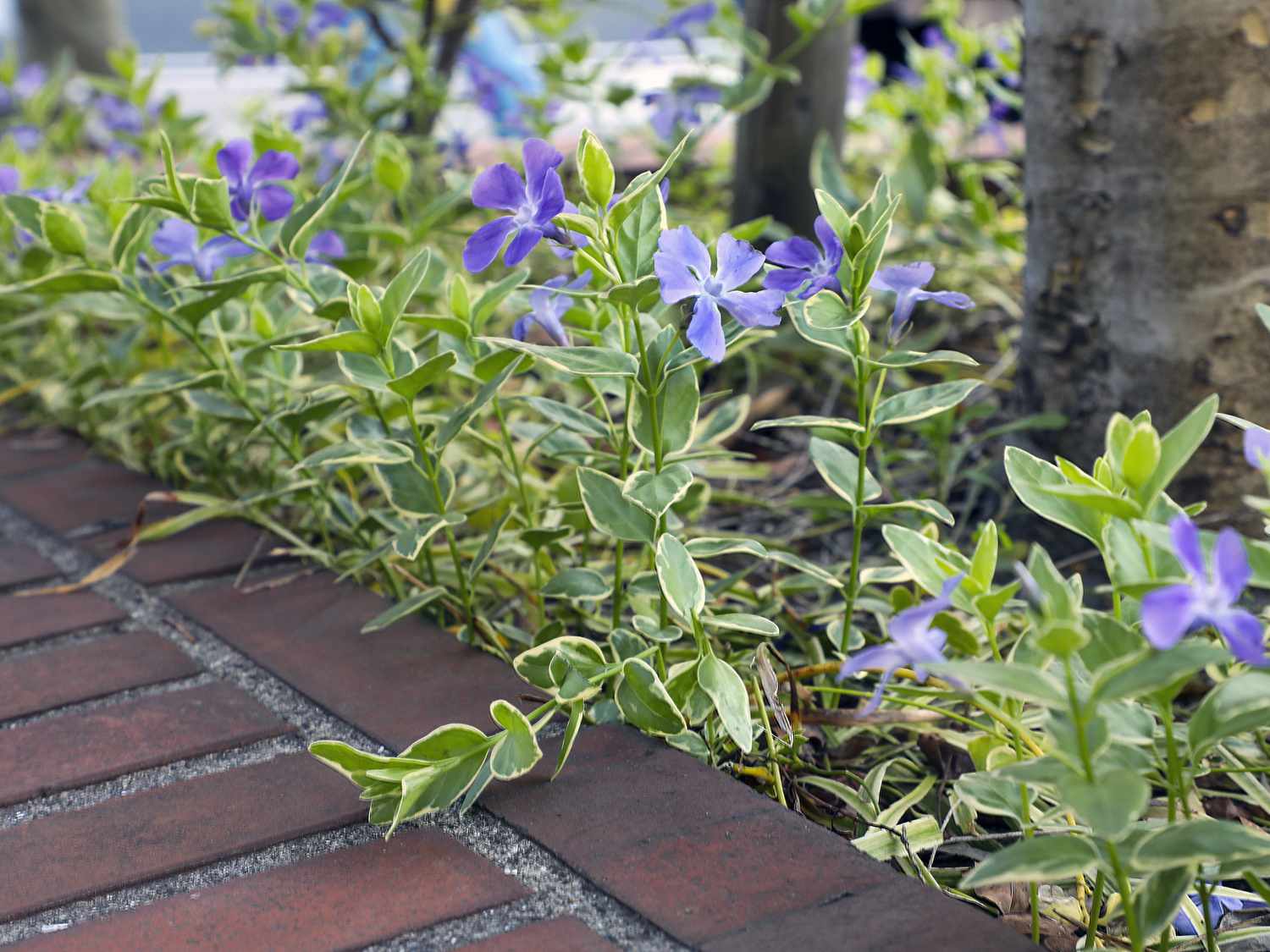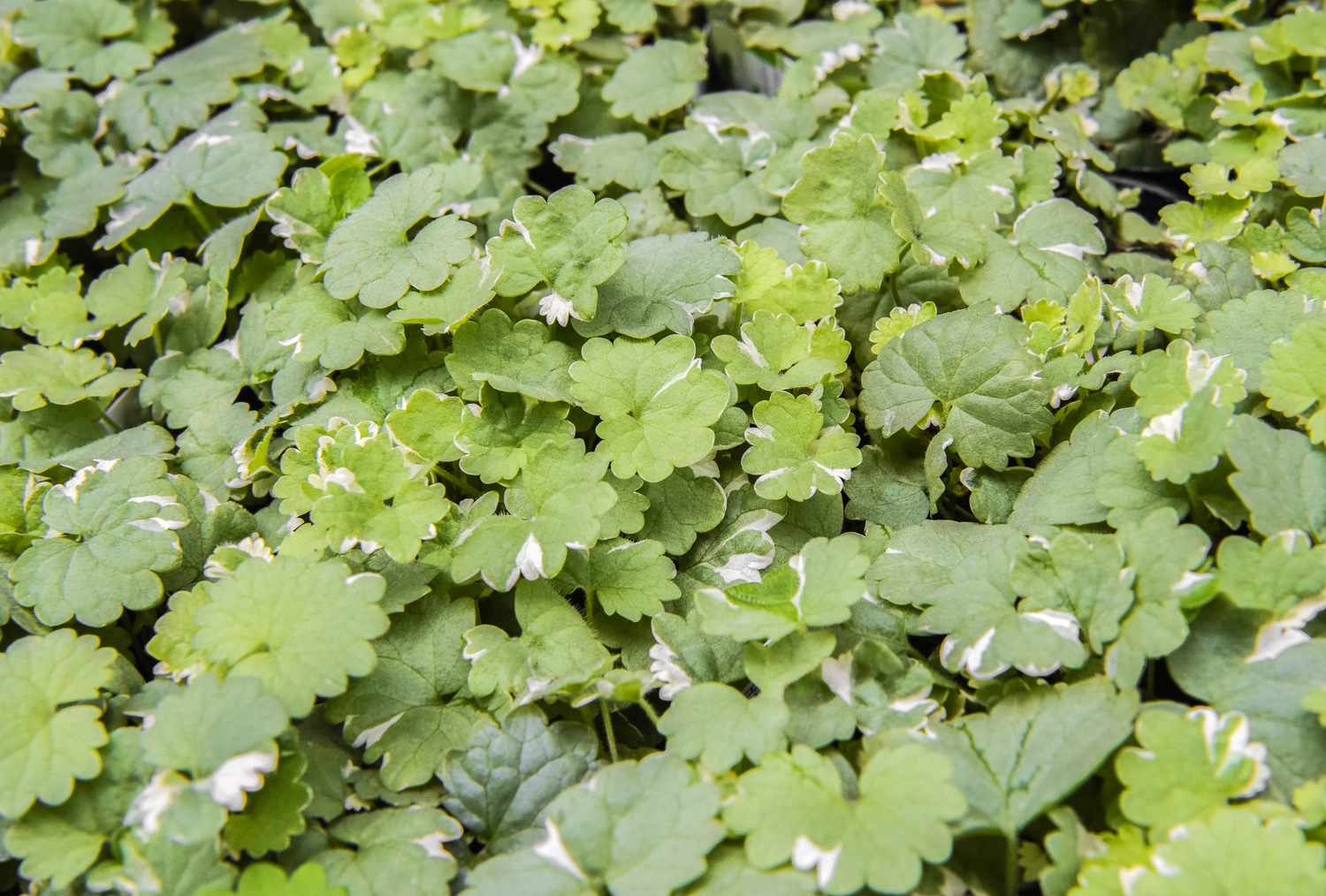Home>Garden Essentials>How To Put Bark As A Ground Cover


Garden Essentials
How To Put Bark As A Ground Cover
Modified: March 7, 2024
Learn how to use bark as a garden ground cover and transform your outdoor space. Create a clean and natural look with this step-by-step guide.
(Many of the links in this article redirect to a specific reviewed product. Your purchase of these products through affiliate links helps to generate commission for Storables.com, at no extra cost. Learn more)
Introduction
When it comes to landscaping, selecting the right ground cover is essential. It not only adds visual appeal to your garden but also serves functional purposes such as weed control, moisture retention, and soil protection. One popular option that homeowners often choose is bark. Bark is not only aesthetically pleasing, but it also offers several advantages that make it an excellent choice for a ground cover.
In this article, we will explore the pros and cons of using bark as a ground cover and provide you with a comprehensive guide on how to properly install and maintain it. Whether you are a seasoned gardener or a beginner, this article will equip you with the necessary knowledge to make informed decisions and create a beautiful and practical landscape.
Key Takeaways:
- Bark ground cover offers natural beauty and practical benefits like weed control and moisture retention. Proper maintenance and troubleshooting common issues are essential for a thriving and vibrant garden.
- Choosing the right type of bark and proper installation are key to creating a stunning and functional ground cover. Regular upkeep and careful planning will ensure a beautiful and low-maintenance garden.
Read more: How To Install Bark As Ground Cover Mulch
Pros and Cons of Bark as a Ground Cover
As with any landscaping material, using bark as a ground cover comes with its own set of advantages and disadvantages. Understanding these pros and cons can help you make an informed decision about whether bark is the right choice for your garden. Let’s take a closer look:
Pros:
- Aesthetic Appeal: Bark adds a natural and rustic look to your garden, enhancing its overall beauty.
- Weed Control: An effective layer of bark acts as a barrier, preventing weed growth by blocking sunlight and impeding weed seeds from germinating.
- Moisture Retention: Bark helps retain moisture in the soil by reducing evaporation, which can be particularly beneficial in arid climates or during dry spells.
- Soil Protection: Bark acts as a protective layer, shielding the underlying soil from erosion caused by heavy rainfall or water runoff.
- Temperature Regulation: The insulating properties of bark can help moderate soil temperature, keeping it cooler in summer and warmer in winter.
- Sustainable Option: Bark is an eco-friendly choice as it is a natural byproduct of the timber industry and can be sourced locally.
Cons:
- Decomposition: Over time, bark breaks down and decomposes, requiring periodic replenishment to maintain its effectiveness.
- Attracting Pests: Certain types of bark, particularly if not properly maintained, can attract insects or harbor pests, such as termites or slugs.
- Seed Contamination: If the bark is not properly processed, it may contain weed seeds or pests that can infiltrate your garden and cause problems.
- Cost: Depending on the type and quantity needed, bark can be relatively expensive compared to other ground cover options.
- Color Fading: Over time, the color of bark may fade due to exposure to sunlight, requiring occasional replacement to maintain its aesthetic appeal.
Considering these pros and cons will help you determine if bark is the right choice for your garden. If the benefits align with your landscaping goals and the potential drawbacks can be managed, bark can be an excellent option for your ground cover needs.
Preparation and Planning
Before installing bark as a ground cover, it is crucial to properly prepare and plan for the project. This will ensure that you achieve the desired result and minimize potential issues down the line. Here are some important steps to consider:
Read more: How To Remove Ground Cover
Evaluate Your Landscape:
Take a good look at your garden and assess its current condition. Consider factors such as the size and shape of the area, any existing plants or structures, and the overall layout. This evaluation will help you determine how much bark you will need and identify any specific areas that may require additional preparation or attention.
Set a Budget:
Establishing a budget is essential before starting any landscaping project. Determine how much you are willing to spend on the bark itself, as well as any additional materials or tools that may be needed. Having a clear budget in mind will help you make informed decisions throughout the process and avoid any unplanned expenses.
Choose the Right Bark Type:
There are different types of bark available for use as ground cover, each with its own characteristics and aesthetic appeal. Some common options include shredded bark, bark nuggets, and pine bark. Research the pros and cons of each type, considering factors such as durability, color, and texture, and choose the one that best suits your preferences and needs.
Measure the Area:
Accurately measure the area where you plan to install the bark. This will help you determine the quantity of bark you need to purchase. Consider the depth of the bark layer as well, as this will impact the overall coverage and effectiveness.
Read more: What Is A Ground Cover Plant
Clear the Area:
Remove any existing vegetation, weeds, or debris from the area where the bark will be installed. This ensures a clean and smooth surface for the bark to be laid down. It is also a good time to address any drainage issues or uneven terrain.
Consider Weed Control:
If weed control is a concern in your garden, consider laying a weed barrier before installing the bark. This will further inhibit weed growth and provide a more effective solution. However, make sure the weed barrier is breathable to allow proper air and water circulation.
By thoroughly preparing and planning your bark ground cover project, you set a solid foundation for success. This careful consideration will save you time and effort in the long run and help you achieve the desired outcome for your garden.
Choosing the Right Type of Bark
When it comes to selecting the right type of bark for your ground cover, there are several factors to consider. Each type of bark has its own unique characteristics that can enhance the aesthetics of your garden and provide specific benefits. Here are some key points to keep in mind when choosing the right type of bark:
1. Shredded Bark:
Shredded bark is a popular choice due to its versatility. It comes in various sizes and colors, allowing you to achieve the desired texture and visual appeal for your garden. Shredded bark tends to compact well and provides effective weed control. However, it may break down more quickly over time compared to other types.
Read more: When To Transplant Ground Cover
2. Bark Nuggets:
Bark nuggets are larger pieces of bark that create a natural and rustic look. They are slower to decompose than shredded bark and can help retain moisture in the soil. Bark nuggets are suitable for areas with minimal foot traffic, as they can be less stable underfoot. They also provide good weed control.
3. Pine Bark:
Pine bark is a popular choice for its rich color and texture. It is known for its durability and tends to break down at a slower rate than other types of bark. Pine bark is an excellent option for areas with high foot traffic, as it provides good stability. Additionally, it can improve soil texture and drainage.
4. Consider Your Landscape:
Take into account the overall style and existing features of your garden. Consider the colors and textures that will complement your plants and other hardscape elements. For example, if you have a more formal garden, shredded bark may be a better choice, while bark nuggets can enhance a natural or woodland-themed landscape.
5. Budget and Availability:
Consider the cost and availability of different types of bark in your area. Pricing can vary depending on the region and the specific type of bark. Research local suppliers or nurseries to compare prices and ensure that the type of bark you choose fits within your budget.
It is also a good idea to consult with a local garden center or landscaping professional for their recommendations. They can provide guidance based on your specific climate, soil conditions, and landscaping goals.
By carefully considering these factors, you can choose the right type of bark that will enhance the beauty of your garden and provide the desired benefits for your ground cover needs.
Read more: What Is The Cheapest Ground Cover
Preparing the Ground
Properly preparing the ground is a crucial step in ensuring the success of your bark ground cover installation. Adequate preparation will create the ideal conditions for the bark to perform effectively and last longer. Follow these steps to prepare the ground for your bark ground cover:
1. Clear the Area:
Start by removing any existing vegetation, weeds, rocks, or debris from the area where you plan to install the bark. Use a garden rake, shovel, or weed trimmer to clear the surface thoroughly. This will create a clean and level ground for the bark to be laid down.
2. Address Drainage Issues:
Assess the drainage of the area. If there are any low-lying spots or areas prone to standing water, consider leveling the ground or improving the drainage before installing the bark. This will prevent water from pooling and potentially causing damage to the bark or underlying soil.
3. Weed Prevention:
If weed control is a concern in your garden, consider laying a weed barrier before applying the bark. A weed barrier, such as landscaping fabric, can be placed over the cleared ground to inhibit weed growth. Ensure that the fabric is properly secured and has sufficient overlaps to prevent weeds from finding openings.
Read more: How To Plant Vinca Ground Cover
4. Test Soil pH and Amend if Needed:
Take a soil sample and test the pH level. Most plants prefer a slightly acidic to neutral pH range (around 6 to 7). If the soil pH is not within the desired range, you may need to amend the soil by adding organic matter, such as compost or peat moss, to adjust the pH level.
5. Consider Fertilization:
Before laying down the bark, consider fertilizing the soil if necessary. A soil test can help determine any nutrient deficiencies. Choose a slow-release or organic fertilizer appropriate for your plants and apply it according to the instructions. This will provide a nourishing base for your plants and promote healthy growth.
6. Level the Ground:
Using a garden rake or shovel, level the ground to create an even surface. This will ensure a consistent layer of bark when it is applied. Pay attention to any slopes or uneven areas and make adjustments as needed to achieve a smooth and uniform ground.
By properly preparing the ground, you create an optimal environment for your bark ground cover, allowing it to function effectively and provide the desired benefits to your garden. Taking the time to prepare the ground will pay off in the long run, ensuring the longevity and success of your bark ground cover installation.
Installing Bark as a Ground Cover
Installing bark as a ground cover is a relatively straightforward process, but it requires attention to detail to ensure proper coverage and effectiveness. Follow these steps to install bark as your ground cover:
Read more: How To Plant Lantana Ground Cover
1. Calculate the Quantity:
Estimate the amount of bark you need based on the measurement of the area you will be covering and the desired depth. As a general guideline, a 2 to 3-inch layer of bark is recommended for most applications.
2. Prepare the Bark:
If you purchased bags of bark, carefully open and empty them into a wheelbarrow or a large tarp. This will make it easier to distribute the bark evenly over your garden.
3. Start at the Edges:
Begin installing the bark along the edges of your garden or the designated area. Use a rake or shovel to spread the bark evenly, working your way from one side to another. Keep the layer of bark consistent in depth as you progress.
4. Avoid Piling Up Bark:
When spreading the bark, avoid creating thick piles or mounds. Too much bark in one area can trap moisture and suffocate the underlying plants. Aim for an even and level distribution throughout the entire area.
Read more: How To Remove Myrtle Ground Cover
5. Taper the Edges:
As you reach the outer edges of the covered area, taper the layer of bark gradually to create a natural transition between the covered and uncovered sections. This will give your garden a polished and neat appearance.
6. Mulch Around Plants:
Around existing plants or trees, leave a small gap between the bark and the plant base. This prevents the bark from coming into direct contact with the stems or trunks, which can cause rot or pest issues. Mulch the area around the plants using a hand trowel or rake.
7. Smooth and Level the Surface:
Once the bark is distributed, use a rake to smooth out the surface, removing any lumps or uneven areas. This will give your ground cover a clean and finished look.
8. Water the Bark:
After installing the bark, lightly water the entire area. This will help settle the bark and prevent it from blowing away or shifting. Avoid excessive watering, as this can lead to fungus or mold growth.
Installing bark as a ground cover not only enhances the aesthetics of your garden but also provides numerous benefits for plant health and maintenance. By following these steps, you can achieve a well-installed bark ground cover that adds beauty and functionality to your landscape.
Read more: How To Plant Succulent Ground Cover
Maintaining Bark as a Ground Cover
Maintaining your bark ground cover is crucial to ensure its longevity, effectiveness, and aesthetic appeal. Regular maintenance tasks will help preserve the functionality of the bark and keep your garden looking its best. Here are some key maintenance tips to follow:
1. Rake and Fluff:
Periodically rake and fluff the bark to prevent compaction and maintain an even appearance. This will help prevent the formation of hard, compacted areas that can impede water infiltration and air circulation. Raking also helps redistribute bark that may have shifted or blown away due to wind or foot traffic.
2. Weed Control:
Monitor your bark ground cover for any weed growth, especially along the edges or in open spots. Remove weeds as soon as they appear to prevent them from taking root and spreading throughout your garden. Regular weeding will help maintain the pristine appearance of your bark ground cover.
3. Add Mulch as Needed:
Over time, the bark will naturally decompose and settle. Add a thin layer of fresh bark or mulch on top of the existing bark to replenish the coverage and restore the aesthetic appeal. This will help maintain the desired depth and weed-suppressing properties of your bark ground cover.
Read more: How To Trim Ivy Ground Cover
4. Inspect for Pest Infestations:
Regularly inspect your bark ground cover for signs of pests, such as termites or slugs. If you notice any pest infestations, take appropriate measures to control and eliminate them. This may involve using organic pest control methods or seeking advice from a professional exterminator.
5. Monitor Moisture Levels:
Check the moisture levels in the soil beneath the bark regularly. While bark helps retain moisture, it is important to ensure that the soil does not become overly saturated. Water your plants as needed, taking into account the type of plants and the current weather conditions.
6. Refresh Annually:
It is recommended to refresh your bark ground cover annually. This involves adding a new layer of bark to rejuvenate the appearance and optimize the benefits of the ground cover. This is especially important if the previous layer has significantly decomposed.
7. Consider Edging:
To maintain the neatness and prevent the bark from spreading into unwanted areas, consider installing edging along the borders of the ground cover. Edging materials such as plastic, metal, or stone can help create a defined boundary, reducing the chances of bark migration and making maintenance easier.
Regular maintenance of your bark ground cover will ensure its longevity and functionality, while keeping your garden looking attractive and well-maintained. By following these maintenance tips, you can enjoy the benefits of your bark ground cover for years to come.
Read more: How To Plant Sedum Ground Cover
Troubleshooting Common Issues
While bark ground cover can provide numerous benefits to your garden, there are a few common issues that you may encounter. By being aware of these issues and knowing how to address them, you can maintain a healthy and beautiful landscape. Here are some troubleshooting tips for common issues related to bark ground cover:
1. Bark Fading:
Over time, bark may fade in color due to exposure to sunlight and other environmental factors. If the appearance of your bark ground cover becomes dull or faded, consider adding a top layer of fresh bark or mulch. This will revitalize the color and give your garden a refreshed look.
2. Weed Growth:
If weeds are appearing in your bark ground cover, it is essential to address them promptly. Regularly inspect the area and manually remove any weeds that emerge. Applying a pre-emergent herbicide or reapplying a weed barrier can also help in preventing weed growth.
3. Bark Loss due to Wind or Erosion:
If you live in an area with high winds or experience erosion, you may notice bark being blown away or washed out. To mitigate this issue, consider installing windbreaks such as fences or shrubs to create a barrier against strong winds. Additionally, proper grading and adding erosion-control measures like retaining walls or mulch ditches can help prevent soil erosion and bark displacement.
Read more: How To Plant Clover As Ground Cover
4. Pest Infestations:
If you observe signs of pest infestations, such as termites or slugs, it is crucial to address them promptly. Depending on the severity of the infestation, you may need to consult with a professional pest control service to eliminate the pests effectively and protect your garden.
5. Bark Decomposition:
Over time, bark will naturally decompose, and you may notice a decrease in its effectiveness as a ground cover. To address this issue, consider adding a fresh layer of bark annually or as needed. This will help maintain the desired depth and functionality of the ground cover.
6. Moisture Imbalance:
Ensure that your bark ground cover is not causing excessive moisture retention or drainage issues. Monitor the moisture levels in the soil beneath the bark and adjust your watering accordingly to maintain a healthy balance.
7. Plant Interference:
Occasionally, plants may send out shoots or roots that grow into the bark ground cover. These shoots can disrupt the uniform appearance of the ground cover. Regularly inspect and trim any plant growth that encroaches on the bark, keeping the ground cover neat and well-maintained.
Being proactive in troubleshooting and addressing these common issues will help you maintain a thriving bark ground cover in your garden. Regular maintenance and vigilance will ensure that your ground cover continues to provide the desired benefits and enhances the overall beauty of your landscape.
Read more: How To Kill Invasive Ground Cover
Conclusion
Choosing bark as a ground cover for your garden can be a wise and aesthetically pleasing decision. From its natural beauty to its numerous benefits such as weed control, moisture retention, and soil protection, bark offers a versatile and effective solution for landscaping needs. By following the proper steps for preparation, selecting the right type of bark, and installing it correctly, you can create a stunning and functional ground cover in your garden.
However, it is important to keep in mind the maintenance required to ensure the longevity and effectiveness of the bark ground cover. Regular upkeep, such as raking, weeding, and refreshing the bark layer, will help preserve the appearance and functionality of your ground cover. By troubleshooting common issues and addressing them promptly, you can overcome any challenges and maintain a healthy and vibrant landscape.
Remember to consider your specific garden’s needs and style when selecting the type of bark, as this will greatly impact the overall aesthetic and functionality of your ground cover. Take into account factors such as budget, availability, and the existing features of your landscape to make an informed decision.
Installing bark as a ground cover is a rewarding endeavor that can transform your garden into a beautiful and low-maintenance space. It not only adds visual appeal but also provides practical benefits that contribute to the health and vitality of your plants. With careful planning, proper maintenance, and troubleshooting when needed, your bark ground cover will continue to enhance your garden for years to come.
So, whether you’re looking to create a serene oasis or a vibrant outdoor space, consider the advantages of bark as a versatile and eco-friendly ground cover that will elevate the beauty and functionality of your garden.
Frequently Asked Questions about How To Put Bark As A Ground Cover
Was this page helpful?
At Storables.com, we guarantee accurate and reliable information. Our content, validated by Expert Board Contributors, is crafted following stringent Editorial Policies. We're committed to providing you with well-researched, expert-backed insights for all your informational needs.




0 thoughts on “How To Put Bark As A Ground Cover”